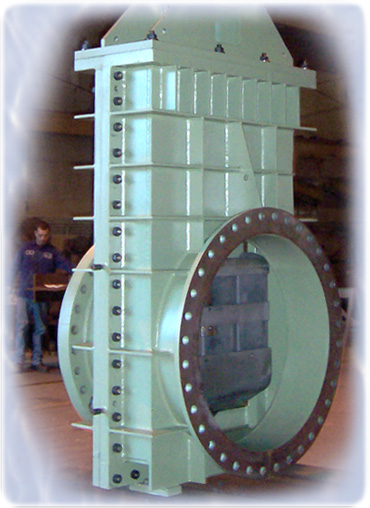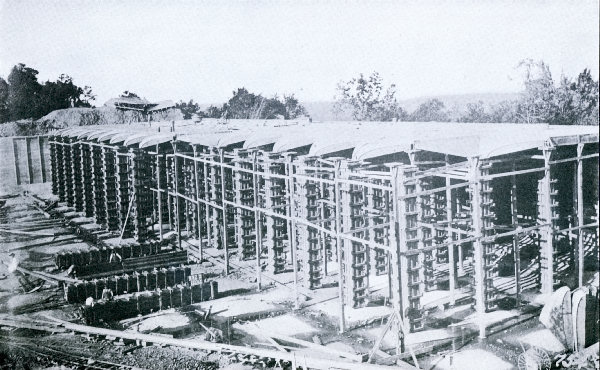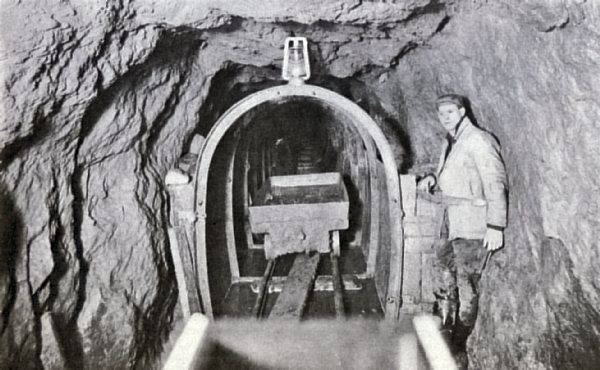Springfield MA
The Springfield Water and Sewer Commission (SWSC) provides water to Agawam, East Longmeadow, Longmeadow, Ludlow, Springfield, Southwick, West Springfield, and Westfield. SWSC's West Parish Filtration Plant was first constructed in 1910 and drew from the 2.5 billion gallon Borden Brook Reservoir (fed by the Little River system). Initially, the plant consisted of six slow sand filters. In the late 1920s, the 22.8 billion gallon Cobble Mountain Reservoir was constructed and became the primary raw water source. Additional slow sand filters increased the plant’s capacity; and by 1966, eighteen slow sand filters with a maximum capacity of 70 million gallons per day (MGD) were in use. Further increases in water demand prompted the construction of six rapid rate filters, which today are used in conjunction with ten slow sand filters for a total capacity of 100 MGD.
Public Resources
- Compliance Data
- NOMs Data
Water system History on the City's water website
Plant and System Data
Watersheds
Consumer Confidence Reports:2
Disinfection Byproducts
Extracted ICR Data
Secure UMass Research Site
UMass Summary of SWSC Data on DBPs and Precursors
Sampling Results for UMass SWSC Projects
Additional Plant and System Data
Project Reports, Theses and other Published Material
| Citation | Notes | Abstract |
|---|---|---|
| Tobiason & Mercer, 2005 | Report on Raw Water Sources | To determine if the hydroelectric generation station and intake reservoir alter the WPFP influent water quality, samples were collected from various locations upstream and downstream of the power station as well as from the WPFP. |
| Liu 2007 MS Thesis | watershed precursor data for 2004-05 | The main objective of this research was to evaluate the sources of NOM and DBP precursors in the tributaries of Cobble Mountain Reservoir in order to understand the distribution of DBP precursors and eventually provide recommendations for watershed management in Cobble Mountain Reservoir Watershed. Samples were collected from major tributaries at different times of the year, and important water quality parameters, V such as TOC, DOC, and UV-254 were measured. Disinfection byproduct formation potential tests were conducted to quantify the DBP precursor levels for all samples. The data set was used to better understand the relationships between these water quality parameters, and correlations with other factors, such as land use, temperature and discharge. Also, water from upstream and downstream locations of several beaver impoundments was sampled and compared to investigate the impact of beavers on NOM levels and DBP formation. |
| Larsen 2009, Capstone Report | Coagulation Optimization | The Springfield Water and Sewer Commission (SWSC) currently utilizes a C-379 Polymer as a coagulant to help remove particulate matter and natural organic matter from their raw water. The West Parish facility has a combination of rapid dual media filters and slow sand filters. The rapid rate plant utilizes Polymer C-379 as a coagulant, despite the plant’s original design calling for alum (aluminum sulfate). The SWSC desires an improved coagulation solution that does not require major infrastructure alterations or increased operating costs. Jar tests and a column filter were used to evaluate the abilities of alternative coagulants based on the rate of filter head loss and the UV254, turbidity, TOC, and DBPs of treated waters. The results indicate that the combination of alum and polymer would improve the water quality properties aforementioned while only producing 2.5 ft/day of head loss. Although this value is higher than the rate of head loss for the polymer alone (1.9 ft/day), the improved TOC removal and decrease in DBP formation are significant. |
| Naughton 2010 MS Thesis | watershed precursor data for 2009-10 | |
| Hinds & Tobiason, 2013 | Precursor removal by GAC | The levels of potentially carcinogenic disinfection byproducts (DBPs) in finished tapwater is regulated by the US Environmental Protection Agency (US EPA). DBPs can form when residual natural organic matter (NOM) present in raw water passes through drinking water filters and reacts with free chlorine added for disinfection. In April 2012, the US EPA’s Stage 2 DBP rule went into effect; the new rule poses stricter regulations on acceptable DBP levels than the prior rule. This research examines the use of granular activated carbon (GAC) for improved NOM removal and DBP control at the Springfield Water and Sewer Commission’s West Parish filtration plant. A pilot-scale plant was constructed on-site at the plant for comparison of GAC to current media. Measurements of organics were taken to determine the effectiveness of GAC at removing NOM from the plant water. Particle filtration data were also recorded across both filters to determine whether GAC was operationally suitable for particle removal. After four months of continuous operation and data collection, it was determined that GAC would be operationally feasible as a particle filter and successful as an organics adsorber. However, the useful life of GAC media based on modeling total plant effluent was on the order of one month, which is probably not long enough to make GAC a practical solution for organics removal It is recommended that the SWSC conduct further research in the area of coagulation optimization as a solution for organics removal. |
Other Written Material



